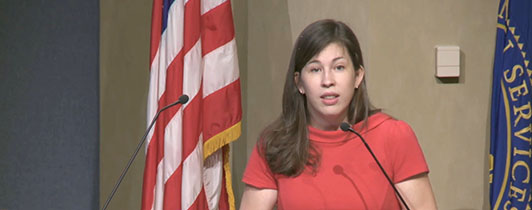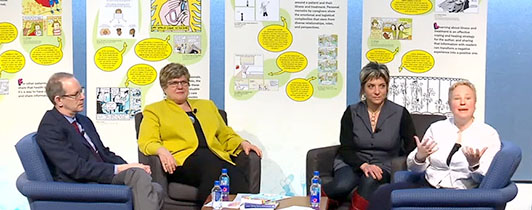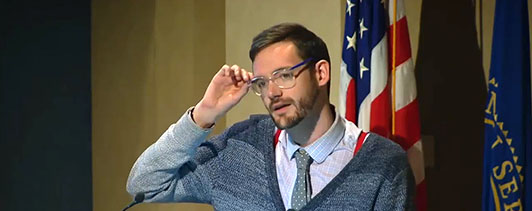Past NLM History Talks
-
Thursday, February 2, 2023
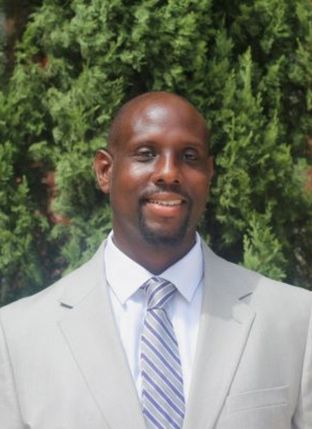
The Many Faces of Diabetes: Complications and Debility in Late 20th Century America
Richard M. Mizelle, Jr., PhD — Associate Professor of History, University of Houston.
Watch the archived lecture at NIH VideoCasting. | Watch on YouTube
Read an interview with Richard M. Mizelle, Jr. on our blog Circulating Now.Diabetes has played a key role in multiple twentieth century movements from the Progressive era to Black Lives Matter. Diabetes is also a window into the many complications of this chronic disease, including amputations, chronic kidney failure, disability, and the ramifications of racism as a public health threat. The many complications of diabetes reveal questions of structural inequality, environmental racism, and medical neglect that inform disease experience. Highlighting the use of some NLM historical collections and his broader work with the higher education modules of the NLM Traveling Exhibition Program, this talk uses diabetes as a window into the Civil Rights and Post-Civil Rights era to rethink the meaning of chronic disease and activism. Secondly, this talk highlights the dual epidemics of amputation and chronic kidney disease that reveal staggering inequalities in public health resources.
Thursday, March 30, 2023
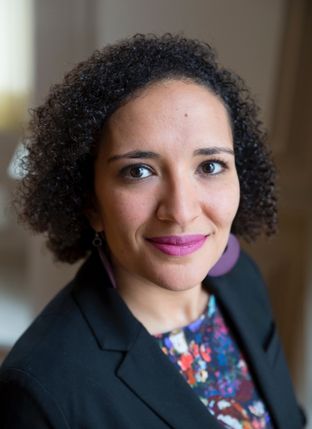
COVID Comics: Decentering White Narratives in Graphic Medicine During the COVID-19 Pandemic
Soha Bayoumi, PhD (She/They) — Senior Lecturer, Medicine, Science, and the Humanities, Johns Hopkins University
Watch the archived lecture at NIH VideoCasting. | Watch on YouTube
Read an interview with Soha Bayoumi on our blog Circulating Now.The Graphic Medicine Manifesto (2015) defines Graphic Medicine as “the intersection of the medium of comics and the discourse of healthcare.” Since the field emerged over a decade ago as a legitimate area of scholarly inquiry, artistic creativity, and interest for medical professionals, patients, and caregivers alike, the NLM has engaged with it in different ways, growing its collection of graphic narratives exploring experiences of illness and organizing a traveling exhibition, "Graphic Medicine: Ill-Conceived & Well-Drawn!” through display panels and a variety of events to raise awareness about this burgeoning field. Despite efforts to diversify the field of Graphic Medicine, many have lamented the fact that it continued to center white narratives. In this talk, Dr. Bayoumi explores the ways in which the COVID-19 pandemic has changed this. She argues that the nature of the pandemic, as a major global event affecting health all over the planet and disproportionately impacting communities of color, meant that many more BIPOC and other people of the global majority have produced diverse narratives of COVID, graphic and otherwise. She claims that COVID’s diversifying effect on Graphic Medicine is indelible and is paving the way for the expression of many more diverse graphic narratives of health and illness.
Thursday, May 11, 2023
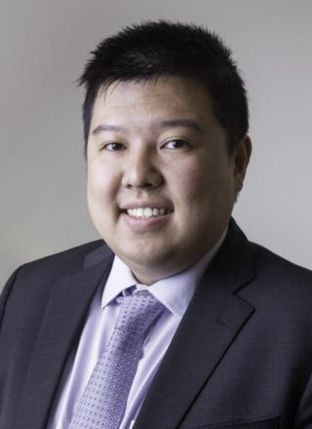
Global Medicine in China and Taiwan: A Diasporic History
Wayne Soon, PhD — Associate Professor, Program of the History of Medicine in the Department of Surgery and Program of History of Science, Medicine, and Technology, University of Minnesota.
Watch the archived lecture at NIH VideoCasting. | Watch on YouTube
Read an interview with Wayne Soon on our blog Circulating Now.By examining two case studies involving how the Chinese diaspora became central in shaping biomedicine in China and Taiwan from 1937 to 1970, Dr. Soon will make a case for a new historical concept of global medicine. “Global medicine” highlights the multivalent and multidirectional flows of transnational medical practices and ideas that shaped Chinese East Asia in the twentieth century. The first case study examines how Chinese American medical personnel established the first Chinese blood bank in New York and Kunming during the Second World War. The second case study reveals how Singapore-born and Edinburgh-educated Dr. Robert Lim, and his international collaborators relocated the National Defense Medical Center from China to Taiwan in 1948 despite numerous challenges arising from the tumultuous Chinese Civil War. This presentation reveals the critical intersections of international expertise, transnational connections, and diasporic affect in shaping medicine and society in modern China and Taiwan.
By examining two case studies involving how the Chinese diaspora became central in shaping biomedicine in China and Taiwan from 1937 to 1970, Dr. Soon will make a case for a new historical concept of global medicine. “Global medicine” highlights the multivalent and multidirectional flows of transnational medical practices and ideas that shaped Chinese East Asia in the twentieth century. The first case study examines how Chinese American medical personnel established the first Chinese blood bank in New York and Kunming during the Second World War. The second case study reveals how Singapore-born and Edinburgh-educated Dr. Robert Lim, and his international collaborators relocated the National Defense Medical Center from China to Taiwan in 1948 despite numerous challenges arising from the tumultuous Chinese Civil War. This presentation reveals the critical intersections of international expertise, transnational connections, and diasporic affect in shaping medicine and society in modern China and Taiwan.
Photo courtesy Karl Rabe, Vassar College
Thursday, June 8, 2023
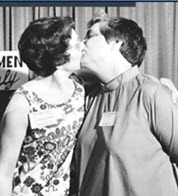
"We’re Here, We’re Queer, Get Used to It": Struggles and Stories to Be Heard for Today and Tomorrow
Randall Sell, ScD — Professor, School of Public Health and Department of Community Health and Prevention, Drexel University
Watch the archived lecture at NIH VideoCasting. | Watch on YouTube
Read an interview with Randall Sell on our blog Circulating Now.Starting with two documents in the archival collections of the NLM, Dr. Sell will examine how early sexual and gender minority (SGM) Americans worked to normalize the presence of SGMs in society. Ralph Werther (1874-?) hoped that his writings might render “nature’s step-children” lives more tolerable and he “offered no apology” for their publication. Specifically, he hoped to repeal laws under which SGMs were incarcerated, put a stop to a continuous string of murders of these stepchildren, and save “hundreds” of these “melancholy sexual intermediates from suicide.” In addition to these objectives, Allen Bernstein (1913-2008) gives further justification for his writings stating that “travelers returning from strange adventure in far ends of the world owe civilization a report.” But Werther and Bernstein struggled, often unsuccessfully, to get their writings published and into libraries such as the Army Medical Library, the predecessor institution of the NLM. In this talk, Dr. Sell will examine their struggles and stories, and those of other SGM writers, including those working today.
Thursday, September 21, 2023 — 7th Annual Michael E. DeBakey Lecture in the History of Medicine
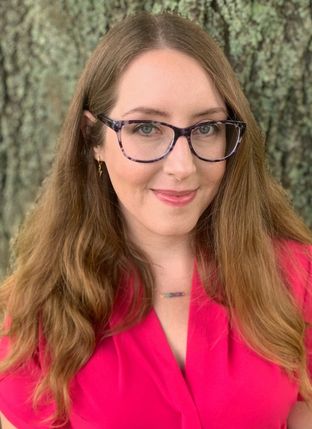
Mrs. Medicine: Doctors’ Wives and the Making of Modern American Health Care
Kelly S. O’Donnell, PhD — Visiting Assistant Professor of U.S. History at Bryn Mawr College, and 2019 NLM Michael E. DeBakey Fellow
Watch the archived lecture at NIH VideoCasting. | Watch on YouTube
Read an interview with Kelly S. O’Donnell on our blog Circulating Now.Marrying a doctor was presented as an aspirational goal for many young women in the twentieth century United States. For those who succeeded in securing a physician husband, however, married life was often hard work. From fundraising for hospital construction to waging political campaigns to answering patients’ phone calls, the doctor’s wife was an essential part of the growth of the American health care system as we know it. Drawing on a wide variety of NLM resources—particularly the publications of medical women’s auxiliary groups—this talk will argue that an understanding of marriage and domestic partnership has been an unfortunately neglected key element in our histories of medicine.
Thursday, November 2, 2023
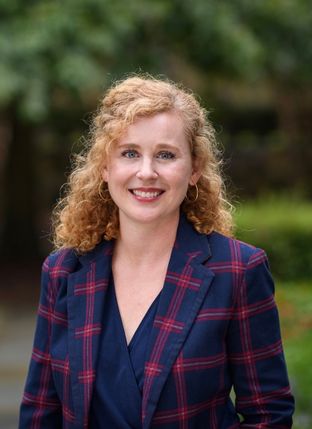
Reading Remedy Books: Manuscripts and the Making of a National Medical Tradition
Melissa B. Reynolds, PhD — Mellon Postdoctoral Fellow, Wolf Humanities Center; Lecturer, History and Sociology of Science, University of Pennsylvania
Watch the archived lecture at NIH VideoCasting. | Watch on YouTube
Read an interview with Melissa B. Reynolds on our blog Circulating Now.Around the turn of the fifteenth century, ordinary English people (merchants, village priests, and well-to-do farmers) found themselves with the means, for the first time, to create books of medical knowledge. Hundreds of the manuscripts they filled with medical recipes, herbals, and prognostications survive in archives across Britain and the United States—three of them at the NLM. As bespoke collections, these manuscripts reveal something of the attitudes and interests of their original fifteenth-century patrons, but they were also living books: many were altered and amended by subsequent readers who shaped them to suit their own ends. Dr. Reynolds’s talk explores the many meanings that accrued to these medical manuscripts over time, from the early fifteenth century when accessing medical knowledge in the vernacular was still something of a novelty, through the sixteenth century, when the technology of print profoundly altered the circulation of medical knowledge in England. Drawing on material from her first book, Dr. Reynolds will show how sixteenth-century readers became amateur archivists, using century-old remedy books to construct an imagined national medical tradition.
Close Close All Open All -
Thursday, January 27, 2022
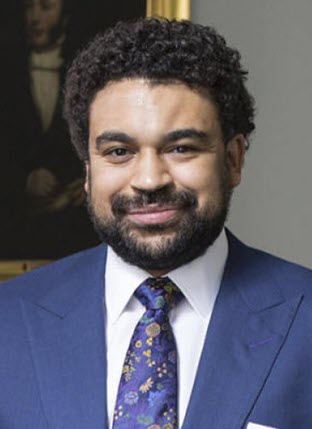
Narratives of Pandemics Past: Archival Approaches to Understanding the COVID-19 Pandemic
Alexandre White, PhD — Assistant Professor of Sociology and the History of Medicine, Johns Hopkins University and School of Medicine
Watch the archived lecture at NIH VideoCasting. | Watch on YouTube
Read an interview with Alexandre White on our blog Circulating Now.The last two years have produced a new fascination with historical epidemic moments. This pandemic of COVID-19 has required us all to become conversant in epidemiology, fields of public health and also histories of medicine. From the 1918/-1920 Influenza pandemic to smallpox and polio eradication campaigns to the HIV/AIDS pandemic, journalists, social scientists and historians have sought historical analogues to our present pandemic moment. Archives have been a critical lens into understanding our current moment. Drawing on material from the U.S. National Library of Medicine as well has his own research on the history of international epidemic responses, Dr. White will explore how archives provide a key glimpse into the ways epidemics have been experienced in the past, how they were conceptualized in their time and ways that we can employ these histories in understanding our own present.
Thursday, February 10, 2022
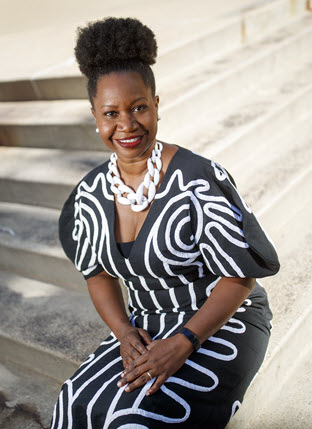
What History Reveals: Slavery and the Development of U.S. Gynecology
Deirdre Cooper Owens, PhD — The Charles and Linda Wilson Professor in the History of Medicine & Director of the Humanities in Medicine Program, University of Nebraska-Lincoln
Watch the archived lecture at NIH VideoCasting. | Watch on YouTube
Read an interview with Deirdre Cooper Owens on our blog Circulating Now.In her talk, Dr. Cooper Owens will reveal the genealogical origins of American modern gynecology. She explains how the institution of American slavery was directly linked to the development of reproductive medicine in the US. Dr. Cooper Owens provides context for how and why physicians denied black women their full humanity; but also valued them as “medical superbodies” highly suited for experimentation to cure all women. Engaging with 19th-century ideas about so-called racial difference, Dr. Cooper Owens sheds light on the contemporary legacy of medical racism.
Thursday, March 17, 2022
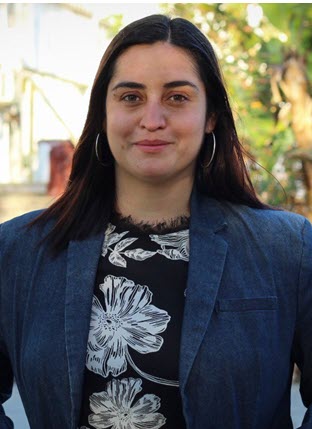
George Deacon and the Circulation of Homeopathic Therapies in Peru (1880-1915)
Patricia Palma, PhD — Assistant Professor at the University of Tarapacá, Arica, Chile
Watch the archived lecture at NIH VideoCasting. | Watch on YouTube
Read an interview with Patricia Palma on our blog Circulating Now.Dr. Palma’s talk will focus on the circulation and use of homeopathic therapies and medicines in Lima in the last decades of the nineteenth century. The American homeopath George Deacon was responsible for expanding this medical practice in the country in the 1880s; this expansion continued until his death in 1915, in spite of his disputes with the local health authorities. Deacon published the first homeopathic journal in the country and Latin America, La Homeopatía. The National Library of Medicine holds the only two issues available in the world. Dr. Palma will discuss the events surrounding the life of Deacon and especially the evolution of his journal, the circulation of medical knowledge between the North and South, and his defense of homeopathy in a country unconnected to this practice.
Thursday, April 28, 2022
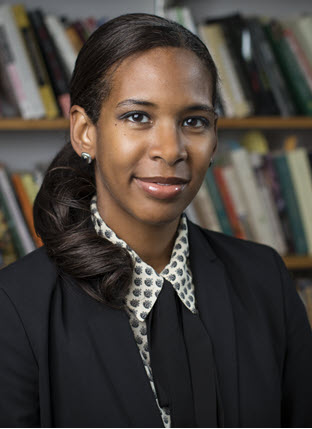
The Measure of Black (Un)Fitness: Legacies of Slavery in the Early Eugenics Movement
Rana A. Hogarth, PhD — Associate Professor of History at the University of Illinois, Urbana-Champaign
Watch the archived lecture at NIH VideoCasting. | Watch on YouTube
Read an interview with Rana A. Hogarth on our blog Circulating Now.This presentation considers how people of African descent became targets of eugenic study during the early decades of the twentieth century. It delves into the methods and assumptions eugenicists used to cast people of African descent as inherently unfit. Eugenicists saw blackness as a heritable trait that signaled a lack of vitality, innate promiscuity, and low achievement. That said, views about Black people’s inherent unfitness circulated well before the advent of eugenics. As such, this paper highlights the ways in which studies on fitness, some of which were carried out by the United States government in the aftermath of the Civil War, proved instrumental in laying the groundwork for future eugenic studies of people of African descent. Drawing upon a number of sources from NLM’s digital collections, Dr. Hogarth will trace the genealogy of ideas white eugenicists held about black people’s allegedly inherent unfitness in medical writings from the era of slavery and beyond.
Dr. Hogarth’s talk is co-sponsored by the National Endowment for the Humanities as part of the NLM/NEH partnership to collaborate on research, education, and career initiatives.
Thursday, May 5, 2022 — 6th Annual Michael E. DeBakey Lecture in the History of Medicine
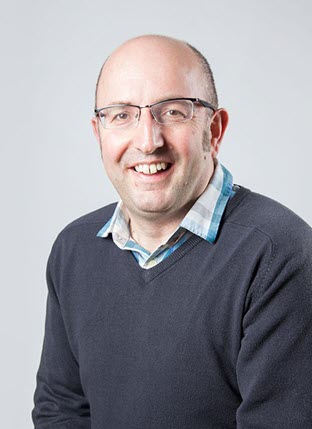
A Laboratory of Humanitarianism: Military and Civilian Captivity during the First World War
Matthew Stibbe, PhD — Professor of Modern European History, Sheffield Hallam University, United Kingdom, and 2019 NLM Michael E. DeBakey Fellow
Watch the archived lecture at NIH VideoCasting. | Watch on YouTube
Read an interview with Matthew Stibbe on our blog Circulating Now.Scholarship on captivity in modern conflicts has mostly focused on its violent aspects and on the very real physical and mental suffering of prisoners of war. This presentation will instead show why the First World War provided a unique laboratory for experimenting with different kinds of humanitarian assistance to those experiencing prolonged incarceration and separation from their families. Building on Dr. Stibbe’s recently published research, his talk will examine three different but overlapping approaches to humanitarian assistance: relief work, efforts to enforce and enhance existing international conventions, and pressures placed on captor nations to come to prisoner exchange agreements. The presentation will conclude by examining the legacy of these developments for cultural and medical understandings of wartime captivity in the inter-war period and beyond.
The annual Michael E. DeBakey Lecture in the History of Medicine is given by a recipient of the NLM Michael E. DeBakey Fellowship in the History of Medicine, which supports research in the historical collections of the National Library of Medicine. The Fellowship was established in 2016 and is supported by from The DeBakey Medical Foundation. Explore past NLM Debakey Lectures.
Thursday, June 23, 2022
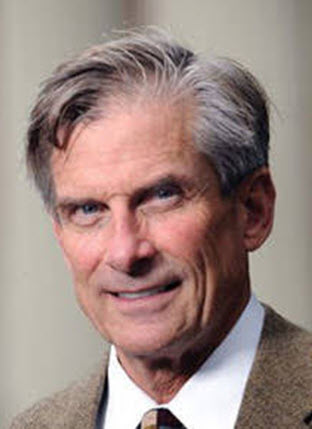
Merleau-Ponty, Descartes, and the Meaning of Painting
William D. Adams, PhD — Former Chairman, National Endowment for the Humanities, and Former President, Colby College
Watch the archived lecture at NIH VideoCasting. | Watch on YouTube
Read an interview with William D. Adams on our blog Circulating Now.Using materials from the historical collection of the National Library of Medicine, Dr. Adams will explore the French phenomenologist Maurice Merleau-Ponty’s critique of René Descartes’s theory of vision.
Dr. Adams' talk is co-sponsored by the National Endowment for the Humanities as part of the NLM/NEH partnership to collaborate on research, education, and career initiatives.
Thursday, July 14, 2022
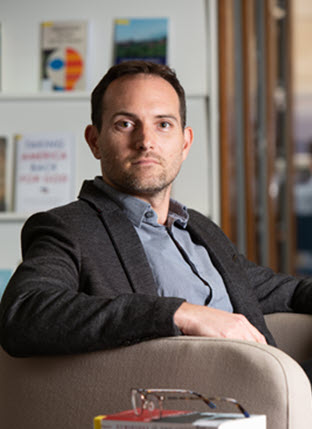
Islamic Medical Manuscripts in the National Library of Israel Collections
Samuel Thrope, PhD — Curator, Islam and Middle East Collection, National Library of Israel, Islamic Medical Manuscripts in the National Library of Israel Collections
Watch the archived lecture at NIH VideoCasting. | Watch on YouTube
Read an interview with Samuel Thrope on our blog Circulating Now.The Islam and Middle East Collection of the National Library of Israel contains nearly 2500 Arabic, Persian and Turkish manuscripts dating from the ninth to the nineteenth centuries. Among these are numerous rare and important copies of works that attest to the history of Islamic medicine. While the bulk of these medical manuscripts were donated by the twentieth century scholar and manuscript dealer Abraham Shalom Yahuda, who sold the National Library of Medicine its own Islamic manuscript collection during the early 1940s, others were acquired over the course of the decades. Dr. Thrope’s talk will provide a guided tour of the National Library of Israel’s Islamic medicine collection, focusing in particular on rare and unique manuscripts that can shed light on the NLM's own collection, which is among the best in the world.
Thursday, September 15, 2022 — 13th Annual James H. Cassedy Lecture in the History of Medicine
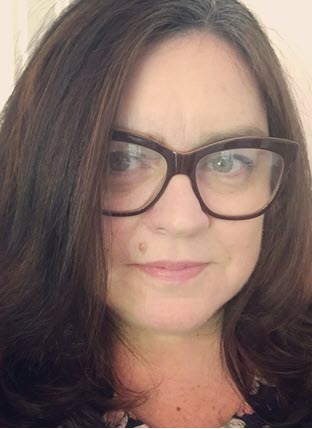
Jim Crow in the Asylum: Psychiatry and Civil Rights in the American South
Kylie M. Smith, PhD — Associate Professor, 2021-2022 President’s Humanities Fellow, Fox Center for Humanistic Inquiry, Andrew W. Mellon Faculty Fellow for Nursing & the Humanities, Emory University Atlanta, Georgia, and 2019 NLM G13 grant recipient
Watch the archived lecture at NIH VideoCasting. | Watch on YouTube
Read an interview with Kylie M. Smith on our blog Circulating Now.In 1969, after a protracted legal battle, Judge Frank M. Johnson of Alabama ordered that segregation of that state’s psychiatric hospitals was illegal and unconstitutional. In his judgement, Johnson drew on government inspections and grass roots legal activism to critique the terrible conditions that prevailed for Black patients. In this lecture Dr. Smith will give a preview of her forthcoming book Jim Crow in the Asylum in which she will demonstrate that racial segregation in psychiatric hospitals in Alabama, Georgia and Mississippi was supported by underlying racist ideologies and has had long term consequences for psychiatric care in the South. This research draws on extensive records from the NLM, national and state archives, and the papers of the NAACP Legal Defense Fund, and is supported by the G13 Grant for Scholarly Works from the National Library of Medicine.
For more than a decade, the NLM History of Medicine Division has hosted this special lecture in memory of our late colleague Dr. James H. Cassedy (1919–2007), renowned historian of medicine, 50-year employee of NLM, editor of the printed Bibliography of the History of Medicine and supporter of many essential research tools valued by generations scholars. During the course of his distinguished scholarly career, Dr. Cassedy received every major honor that the national professional society in his field, the American Association for the History of Medicine, could bestow. Explore past Cassedy Lectures.
Tuesday, October 4, 2022
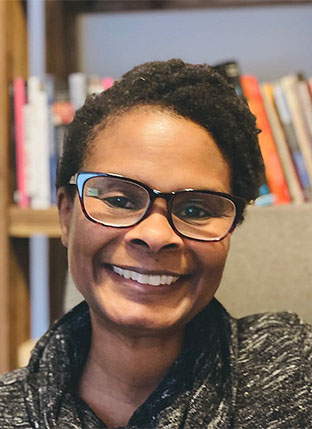
Shutting the Digital Back Door: Creating Tech Justice with Health Data Liquidity and the Digital Humanities
Kim Gallon, PhD, MS, MLIS — Associate Professor of Africana Studies, Brown University, and Just Tech Fellow, Just Tech Program, Social Sciences Research Council
Watch the archived lecture at NIH VideoCasting.
Read an interview with Kim Gallon on our blog Circulating Now.This talk explores the concept of the digital back door in health care, “technological processes and tools used in health care, such as racially biased algorithms, infrastructural limitations, and dirty data” and its historical roots in structural and systemic racism. The methodological use of the digital humanities offers an opportunity to eliminate digital back doors by creating more humanistic and equitable health information technology (health IT) that address health disparities and inequities. Data liquidity, health information and data that is more computationally agile, usable, and interoperable between patients and clinicians, fosters a reinterpretation of health data into voice, image and text that is both conducted and conveyed through the digital humanities. The talk concludes with the challenges of dismantling health IT praxis and infrastructure that are antithetical to the digital humanities and data liquidity.
Dr. Gallon’s talk is co-sponsored by the National Endowment for the Humanities as part of the NLM/NEH partnership to collaborate on research, education, and career initiatives.
Thursday, October 27, 2022

Socio-Cultural Responses within India during Times of Pandemic Disease
John Mathew, PhD — Associate Professor of History of Science, Humanities & Social Sciences & Sciences, Krea University, Sri City, Andhra Pradesh, India
Watch the archived lecture at NIH VideoCasting. | Watch on YouTube
Read an interview with John Mathew on our blog Circulating Now.Focusing on the history of India, Dr. Mathew will explore the complex and underappreciated ways in which Indian folk-beliefs, myth, superstition, related stories (witnessed and fictional) and local traditions, have combined to inform the experience of epidemic and pandemic disease, including in the main, but not limited to, cholera, plague, influenza and COVID-19. Drawing on collections of the NLM and other institutions, he will investigate how these complex belief systems intersect with different kinds of information about these diseases, revealing how every new outbreak is accompanied with information that did not exist during the previous outbreak, indeed how histories of these events have been documented and remembered from generation to generation.
Wednesday, November 9, 2022
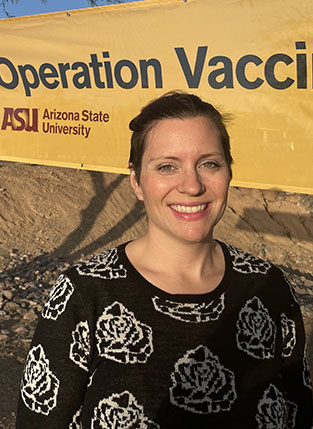
Life after Lockdown: Pandemic Perspectives from Peru
Kathleen Kole de Peralta, PhD — Clinical Assistant Professor of History, Arizona State University
Watch the archived lecture at NIH VideoCasting. | Watch on YouTube
Read an interview with Kathleen Kole de Peralta on our blog Circulating Now.The Journal of the Plague Year: A COVID-19 Archive is a digital, open access, crowdsourced archive collecting pandemic stories. Since its inception in March 2020, the archival team made efforts to intentionally collect pandemic stories in ethical, inclusive ways. In particular, it shows what we gain when we intentionally build digital humanities projects that expand beyond academic institutions and audiences. The COVID-19 archive successfully partnered with universities, libraries, and contributors across the global south including the Philippines, American Samoa, India, and Peru. Peru had one of the earliest, strictest, and longest lockdown policies, and yet it is still the global leader in COVID-19-related fatalities. Drawing on quantitative and qualitative data submitted to the archive and oral histories, this talk examines the breaking points that undermined public health efforts and what life after lockdown looks like in Peru.
Dr. Kole de Peralta’s talk is co-sponsored by the National Endowment for the Humanities as part of the NLM/NEH partnership to collaborate on research, education, and career initiatives.
Thursday, November 17, 2022
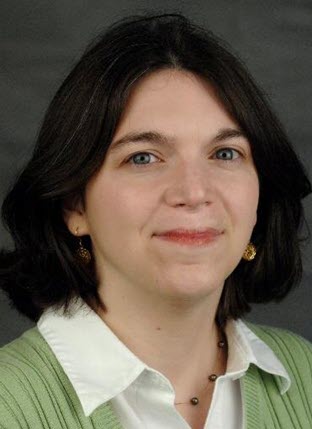
What’s in a Web Archive Collection? Summarization and Discovery of Archived Webpages
Michele C. Weigle, PhD — Professor, Department of Computer Science, Old Dominion University
Watch the archived lecture at NIH VideoCasting. | Watch on YouTube
Read an interview with Michele C. Weigle on our blog Circulating Now.Web archives are becoming an increasingly important resource for historical research, but discovery of resources in web archives can be daunting. The largest web archives, such as the Internet Archive's Wayback. Machine, are often too large for full-text search. To overcome this, many institutions, including the National Library of Medicine, have created collections of archived webpages to assist researchers in finding relevant materials. Dr. Weigle’s talk will present an overview of web archiving, discuss challenges in making sense of web archive collections, and highlight projects in the Web Science and Digital Libraries (WS-DL) research group at Old Dominion University focused on enhancing web archive collections.
Close Close All Open All -
Thursday, February 11, 2021 — 12th Annual Cassedy Lecture in the History of Medicine
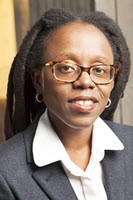
“Savages cry easily and are afraid of the dark”: What It Means to Talk about Race and African American Health
Naa Oyo A. Kwate, PhD — Associate Professor of Africana Studies and Associate Professor of Human Ecology, Rutgers University, and recipient of a 2018 NLM G13 Award for Scholarly Works in Biomedicine and Health for Race and the Transformation of the Food Environment: Fast food, African Americans, and the Color Line, 1955–1995
Watch the archived lecture at NIH VideoCasting.
Read an interview with Naa Oyo Kwate on our blog Circulating Now.This talk examines the impact of racism on African American health, looking at pervasive inequities that drive higher rates of morbidity and death in the United States. Where once explicitly racist theories of African American bodies and minds dominated public and scientific discourse, contemporary understandings of racial inequities in health tend to use less incendiary language, but still conceive of poor health as fundamentally a problem of individuals. Such framing centers health behaviors including diet and visits to the doctor, and leaves the role of social structures uninterrogated. This talk explores the deeply entrenched effects of racism on African American health through institutional policies and practices that defeat socioeconomic opportunity and cause overexposure to harms; stereotypes; day-to-day encounters with racism; and other aspects of American social life.
Image copyright Christophe Delory
Thursday, March 25, 2021
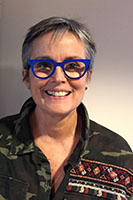
Placing Women in Medicine: Maude Abbott and the Archaeology of Friendships
Read an interview with Annmarie Adams on our blog Circulating Now.
Watch the archived lecture at NIH VideoCasting. | Watch on YouTubeThis talk is drawn from a chapter of Professor Adams’s forthcoming biography of Canadian physician Maude Abbott. It explores how a prominent woman negotiated relationships during the early twentieth century. Abbott spent most of her career at McGill University in Montreal, as curator of its medical museum and as a researcher in congenital heart disease. Nonetheless her network of correspondents was vast. Engaging an approach Professor Adams calls “friendship archaeology,” she will excavate Abbott’s relationship with two powerful American physicians, Paul Dudley White and Emanuel Libman. Archival evidence, including the Libman papers held by the NLM History of Medicine Division, turns up links with Nobel prize nominees and winners, revealing how close Abbott lived to that world.
Thursday, June 3, 2021 — 5th Annual Michael E. DeBakey Lecture in the History of Medicine
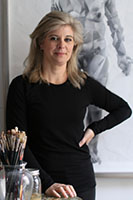
Dissecting Gender: Reframing Anatomical History Through the Female Body
Watch the archived lecture at NIH VideoCasting.
Read an interview with Allison Hill-Edgar on our blog Circulating Now.The female body has been a part of anatomical history from its inception, but usually as the reproductive other to the male body. This presentation re-examines the Western anatomical tradition through the lens of the female body in order to elucidate factors that have framed our understanding of and approach to gender differences in medicine and society. Anatomical studies exist at the intersection of medicine and art, as well as observation and interpretation. Consequently, they reveal much about the practices, beliefs, biases and power dynamics of the cultures in which they were created. Drawing primarily on images and sources held by the NLM History of Medicine Division, this presentation will share an array of often marginalized anatomical works, and highlight many of the related subjects, patients, medical practitioners, anatomists, artists, and activists. This archival analysis reveals the impact of anatomical visual history on current culture and medical practice today.
Thursday, September 9, 2021
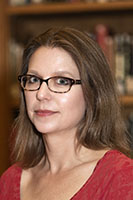
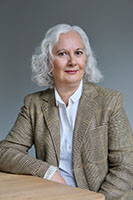
Peril in the Air: Pollution Activism on Film
Read an interview with Sarah Eilers and Angela Saward on our blog Circulating Now.
Watch the archived lecture at NIH VideoCasting. | Watch on YouTubeMoving images are a powerful medium for conveying the impact of polluted air on humans and other living things. This often-invisible menace can have catastrophic effects. In 1948, the Donora Smog in Pennsylvania killed 20 and sickened half of the town’s population, while in the UK the Great Smog of 1952 led to 12,000 deaths—and a Clean Air Act just four years later. Add to these events Rachel Carson’s 1962 book Silent Spring, and the modern environmental movement took root. Legislative and societal changes followed on both sides of the Atlantic. In this presentation of select US and British films on air pollution and the environment, Sarah Eilers and Angela Saward explore the intersection of filmmaking, government, and medicine as they not only respond to, but attempt to drive, this shift of the collective mind. Vivid imagery and dramatic narration make clear the power of film to tell a story that words alone often do not.
Close Close All Open All -
Thursday, February 27, 2020
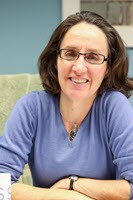
The Girl in the Lion Cage: Regulating Hypnotism in Nineteenth Century France
Katrin Schultheiss, PhD — Associate Professor, Department of History, The George Washington University
Watch the archived lecture at NIH VideoCasting. | Watch on YouTube
Read an interview with Katrin Schultheiss on our blog Circulating Now.In 1890 in the southern French town of Beziers, a “carnival hypnotizer” put a sleeping young girl, one “Miss Sperling,” in a lion’s cage, in an effort to demonstrate how profound—and authentic—her hypnotic trance was. The awe of the assembled crowd soon turned to horror, however, as the lion seized “Miss Sperling” in its jaws, parading her around the cage. The victim was eventually extracted and taken to the hospital but soon died from the injuries she sustained. This incident was just one of a number of stories circulating in the French press in the late nineteenth century that vividly demonstrated the dangers of the popular hypnotism shows that captivated audiences across the European continent. Doctors seized on such episodes to argue that the practice of hypnotism should be limited to medical professionals who alone could be trusted with the power to control the minds of others. In some European nations—Belgium and Switzerland, for example, and in some Italian towns—their efforts were successful. In France, however, despite the urging of the powerful neurologist and psychologist Jean-Martin Charcot, efforts to regulate popular hypnotism failed. This talk, based on research completed largely in French nineteenth century medical journals and on the writings of Jean-Martin Charcot (1825–1893), explores the debates surrounding popular hypnotism. It argues that the failure to regulate the practice in late nineteenth-century France reveals conflicts over the authority of professional medicine, the changing role of women, and deep cultural anxiety about the power of the unconscious mind.
Wednesday, April 2020-Special Program
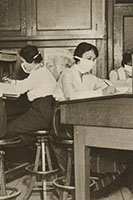
Reporting, Recording, and Remembering the 1918 Influenza Epidemic
Watch the archived lecture at NIH VideoCasting. | Watch on YouTube
Read an article on the symposium in the NIH Record.Join us to learn the research outcomes of Virginia Tech students studying the history of data in social context through individual and collaborative primary-source research here at the NLM and elsewhere, and as part of their course Topics in the History of Data in Social Context, being taught by Dr. E. Thomas Ewing.
During the symposium, the students will present their research on various aspects of the 1918 pandemic, including newspaper reporting at the peak of the epidemic (late September to early November 1918), contemporary social distancing policies and procedures, and how contemporaries determined that the epidemic was ending, and how they remembered the remarkable experience of this intense, but relatively brief, crisis in community health.
Discussants will include Dr. Nancy Bristow of the University of Puget Sound and author of American Pandemic: The Lost Worlds of the 1918 Influenza Epidemic (Oxford University Press, 2012), among others.
All are welcome to tune-in to this research symposium which advances the NLM 2017-2027 strategic plan emphasizing data-driven discovery, enhanced stakeholder engagement, and the role of libraries and archives in providing trusted information.
Reporting, Recording, and Remembering the 1918 Influenza Epidemic is sponsored by the NLM History of Medicine Division in cooperation with the National Endowment for the Humanities Office of Digital Humanities—as part of the ongoing NLM/NEH partnership to collaborate on research, education, and career initiatives.
Tuesday, June 9, 2020
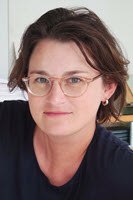
When People are Data: How Medical History Matters for Our Digital Age
Joanna Radin, PhD — Associate Professor, Program in History of Science and Medicine, Yale University
Watch the archived lecture at NIH VideoCasting. | Watch on YouTube
Read an interview with Joanna Radin on our blog Circulating Now.This talk focuses on the history of a particular collection of data, extracted and digitized from patient records made in the course of a longitudinal epidemiological study involving Indigenous members of the Gila River Indian Community Reservation in the American Southwest. The creation, circulation, and eventual restriction of the Pima Indian Diabetes Dataset (PIDD) demonstrates the value of medical and Indigenous histories to the study of Big Data. The history of the PIDD reveals how data becomes alienated from persons even as it reproduces complex social realities of the circumstances of its origin.
Wednesday, September 9, 2020 — 4th Annual Michael E. DeBakey Lecture in the History of Medicine

DeBakey in Baghdad and Beirut: The Internationalization of Surgical Education, 1945–1970
Sara Farhan, PhD — 2019 NLM Michael E. DeBakey Fellow in the History of Medicine, Assistant Professor of History, Department of International Studies, American University of Sharjah
Watch the archived lecture at NIH VideoCasting. | Watch on YouTube
Read an interview with Sara Farhan on our blog Circulating Now.The techniques of medical education in the fields of surgery underscore the universality of the medical profession and the internationalization of its pedagogies. This presentation examines the field of surgery in the medical schools of Baghdad and Beirut as comparative transnational microcosms for the study of the development of pedagogical approaches of surgical education. Pointedly, this presentation focuses on the centrality of Dr. Michael Elias DeBakey in this internationalization process. In the aftermath of World War II, DeBakey became vernacularized in surgical canon. Medical students in the Middle East studied DeBakey’s techniques and the intricacies of his inventions while instructors employed his pedagogies. In examining DeBakey’s influence on curricular development in the Middle East, the complexities and richness of cross-cultural exchange in the realm of medical education and the trajectory of the pedagogy of surgical education can help us understand the processes of the internationalization of the medical profession.
Thursday, October 15, 2020
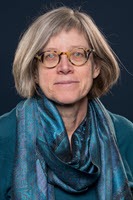
New Drugs, Old Problems: The Sulfonamide Revolution and Children’s Health Care Delivery in the United States, 1933–1949
Cynthia Connolly, PhD, RN, FAAN — Professor of Nursing, Rosemarie B. Greco Endowed Term Chair in Advocacy, and Associate Director, Barbara Bates Center for the Study of the History of Nursing, University of Pennsylvania School of Nursing
Watch the archived lecture at NIH VideoCasting. | Watch on YouTube
Read an interview with Cynthia Connolly on our blog Circulating Now.Drawing on pediatric patient records housed at the National Library of Medicine, Dr. Connolly explores the transformation wrought by the sulfonamides in medical and nursing practice at Baltimore’s Sydenham Hospital. Published articles, oral histories, and physician memoirs reveal only part of the story of one of the most pivotal scientific breakthroughs of the twentieth century. Through patient records, which rarely survive intact, it is possible to appreciate the ways in which the new therapeutics demanded more intense bedside care, enhanced laboratory facilities, and new levels of cooperation. Examining patient records also reveals how and why the care of infants and children with infectious diseases made demands on physicians and nurses that differed from those facing clinicians treating adult patients. Finally, the clinical practices, policy debates, and legal infrastructure that arose in the context of the sulfonamides provided a template for pediatric drug development going forward that exists into the present day.
Thursday, December 3, 2020

Rise, Serve, Lead… And Publish: Including Women Physicians’ Writings in Rise, Serve, Lead: America’s Women Physicians
Ashley Bowen, PhD — Editor, Perspectives on History, American Historical Association
Watch the archived lecture at NIH VideoCasting. | Watch on YouTube
Read an interview with Ashley Bowen on our blog Circulating Now.The NLM banner exhibition and companion online adaptation Rise, Serve, Lead! America’s Women Physicians celebrates the impact that remarkable women made on medical care, education, and research. In the 170 years since Dr. Elizabeth Blackwell became the first woman to earn an MD degree from an American medical school, women have risen to the highest ranks of the profession, served as leaders in their communities, and led their peers.
In this talk, the curator of Rise, Serve, Lead, Dr. Ashley Bowen discusses the lives and accomplishments of three very different women featured in the exhibition—Dr. Rebecca Crumpler, Dr. Helen Rodríguez Trías, and Dr. Frances Conley—and then discuss how the collections of the NLM shaped the exhibition. Each of these remarkable physicians contributed to the medical literature during her lifetime, and many are represented in the NLM collections, as well as in PubMed Central, the NLM’s free full-text archive of biomedical and life sciences journal literature. Dr. Bowen reflects on how connecting each woman’s biography to her published work shaped her thinking about the featured doctors and their impact on the field.
Close Close All Open All

